June 22, 2024 by Heather
An Intoduction to Damascus Steel
A Journey Back Over 2000 Years
Over two millennia ago, human ingenuity and necessity converged to create one of the most remarkable materials in history: Damascus steel. Born from the need for a strong and resilient metal, ancient blacksmiths developed a technique that has captivated the world for centuries.
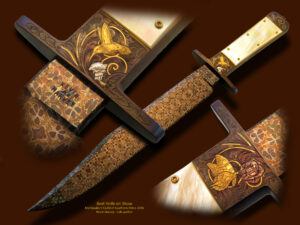
As an Amazon Associate I earn from qualifying purchases.
List of Knife-Related Suppliers in South Africa.
https://amzn.to/3XMkpgC This link will take you to Amazon pages where you can purchase handmade damascus steel billets.
Wootz steel, renowned for its exceptional strength and distinctive swirling patterns, has a storied history dating back to ancient times in India. This crucible steel is characterized by its high carbon content and unique microstructure formed through a sophisticated heating, melting, and slow cooling process. Wootz steel was highly prized for its superior sharpness and durability, making it the metal of choice for crafting legendary swords and blades throughout history. Its legacy endures in modern metallurgy as a testament to ancient craftsmanship and metallurgical ingenuity. Recently, bladesmiths have been trying to imitate Wootz steel using modern furnaces and powder metallurgy.
The way damascus got its name is through it being traded from the east to the west in the city of Damascus. It was traded as billets or finished blades with a distinct “watering” pattern. The pattern assured that the weapon was made from the best steel available for weapons. When people ask me what damascus is, my reply to this burning question is “The capital of Syria!” I then go on to describe the mystical steel.
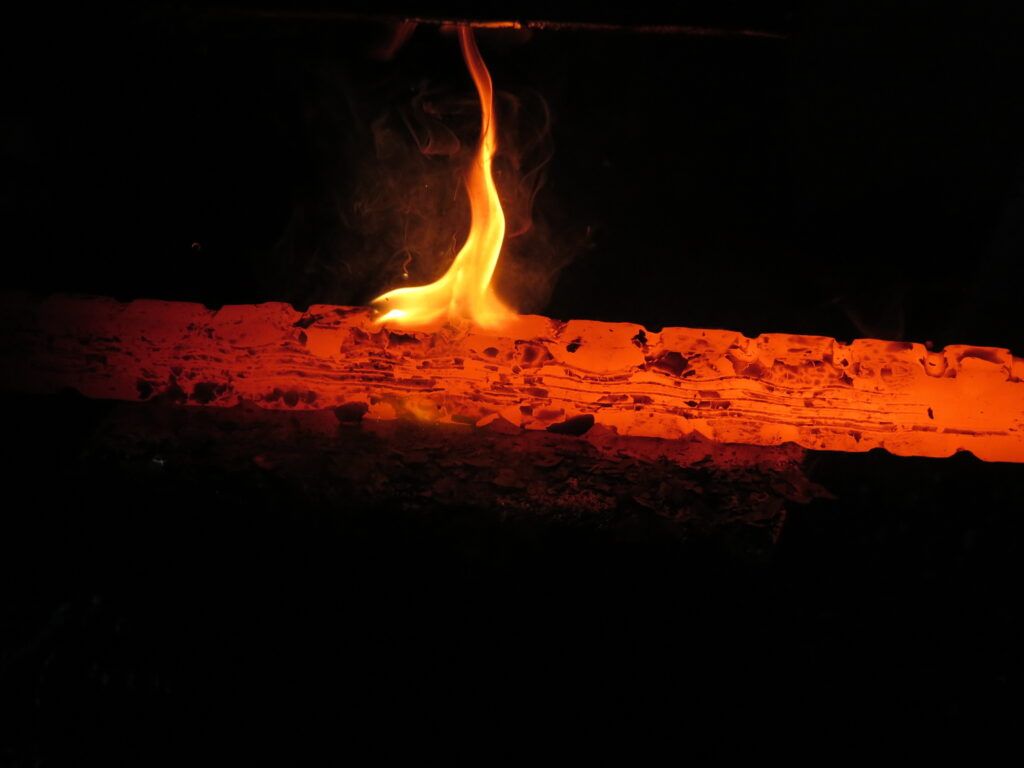
Nowadays, this special steel is created by forging, welding, and folding layers of high- and low-carbon steels at high temperatures. This process produces steel that is both flexible and hard enough to hold a razor-sharp edge. This remarkable process creates a functional material with a distinctive and mesmerizing pattern.
The Beauty Within the Blade
The unique and intricate patterns of Damascus steel are not merely decorative. They are a testament to the skill and artistry of the blacksmith. By manipulating the folds and layers during the forging process, artisans can create an array of stunning designs. The true beauty of these patterns is revealed through a process known as etching, where the steel is dipped in acid, highlighting the contrasts between the different types of steel. The effect a bladesmith is trying to create is called chartoyance. It is the effect you see in a Tigerseye stone.
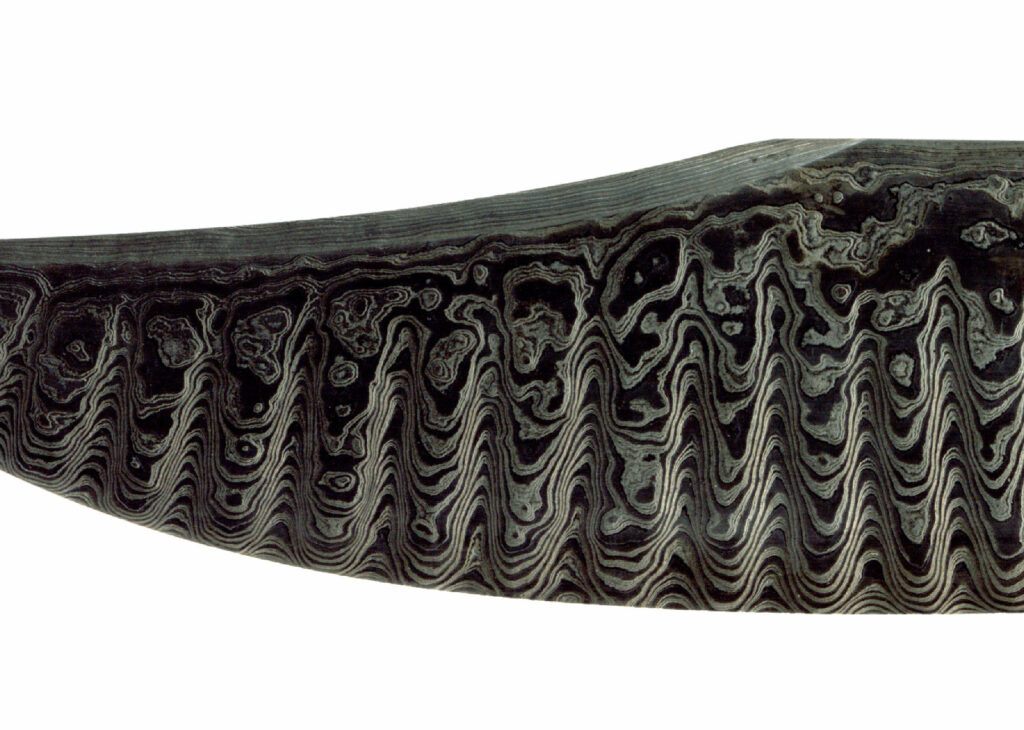
Perfected Across Cultures
Various cultures, notably the Japanese and Vikings, honed the techniques for making Damascus steel to perfection. Each brought their unique styles and improvements, contributing to the legend of Damascus steel. In Japan, the samurai sword became synonymous with exceptional quality and craftsmanship, while the Vikings’ swords were feared and revered across Europe.
Myths and Legends
Such was the awe surrounding Damascus steel that it was often thought to possess magical properties. Stories of its mystical qualities were as widespread as its physical presence. These tales only added to the allure and mystique of Damascus steel, making it not just a material but a symbol of power and prestige.
A Rare Craft in Modern Times
Today, the art of creating genuine Damascus steel is a rare skill practiced by only a few dedicated bladesmiths. This rarity makes Damascus steel a highly collectable material, particularly prized for knife blades. The modern bladesmiths who continue this ancient tradition do so with a reverence for the past and a commitment to preserving its legacy.
A Legacy of Durability
One of the most fascinating aspects of Damascus steel is its durability. Blades crafted over a thousand years ago still exist today, a testament to the remarkable qualities of this material. A well-made Damascus steel knife is not just a tool but an heirloom, capable of lasting many lifetimes.
Damascus Knife Blanks and Kit Knives
Many people do not have the luxury of having space to operate a gas forge, power hammer or even a coal forge and anvil. There is certainly no shame in starting your bladesmithing/knifemaking hobby by buying damascus knife blanks or kits that have already been forged and heat-treated for you. You will gain experience and confidence in finishing off these knives you can be proud of. Here is a link for you to find something that might suit your taste https://amzn.to/4cszAjn
Conclusion
Damascus steel is a testament to human ingenuity, a blend of functionality and art transcending time. Its creation, perfected by ancient cultures and revered for its legendary properties, continues to captivate modern craftsmen and collectors alike. Owning a piece of Damascus steel is not just about possessing a knife; it’s about holding a piece of history, a symbol of craftsmanship that endures through the ages.
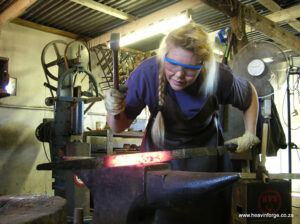
On a personal note, I absolutely loved to make damascus steel. I didn’t want to do anything else. There are so many patterns to make, and new ones are always developing. I see damascus patterns in the clouds at sunset, in the trout stream’s ripples and in the dapples on a horse’s flank. I used to produce up to 10 kgs of damascus steel weekly, mostly to sell to other knifemakers. The very special patterns I would use to forge out a blade, hand it over to Kevin for grinding and he would give it back to me for heat treatment. He would then complete the handle and sheath. These collaborations were marked “Heavin M.S.” and are highly collectable.
In 2013, I had two livestock (not workshop-related) accidents that damaged both my hands. Since then, I have been unable to work in the shop and can only assist with instruction (women are great at nagging!). I still dream about all the unmade damascus blades I desperately want to make. I am just grateful that I can share my knowledge and get a feeling of joy every time I see one of our past students excel in his damascus blades, often creating patterns better than I could.



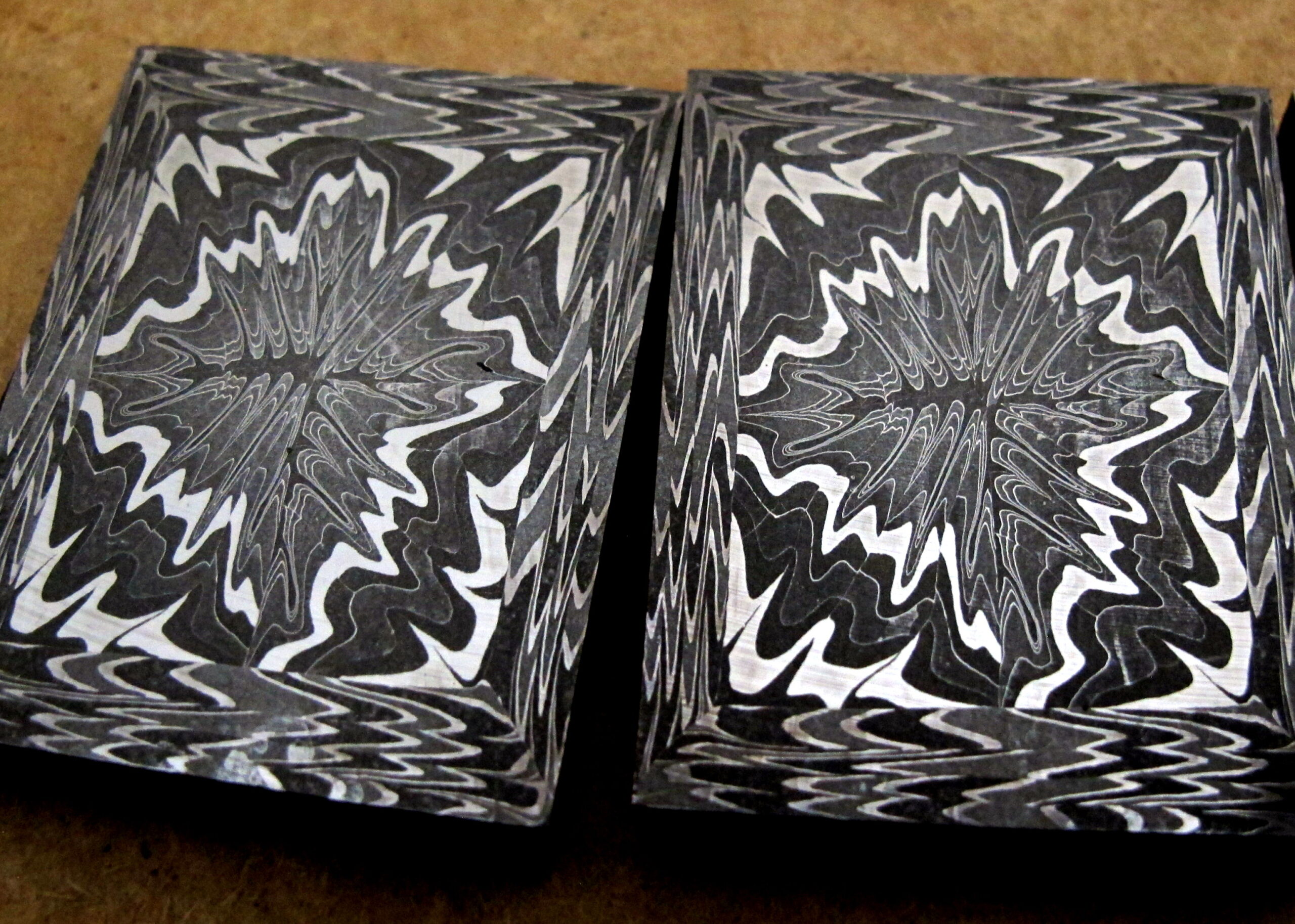
Leave a Reply